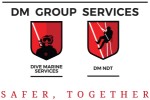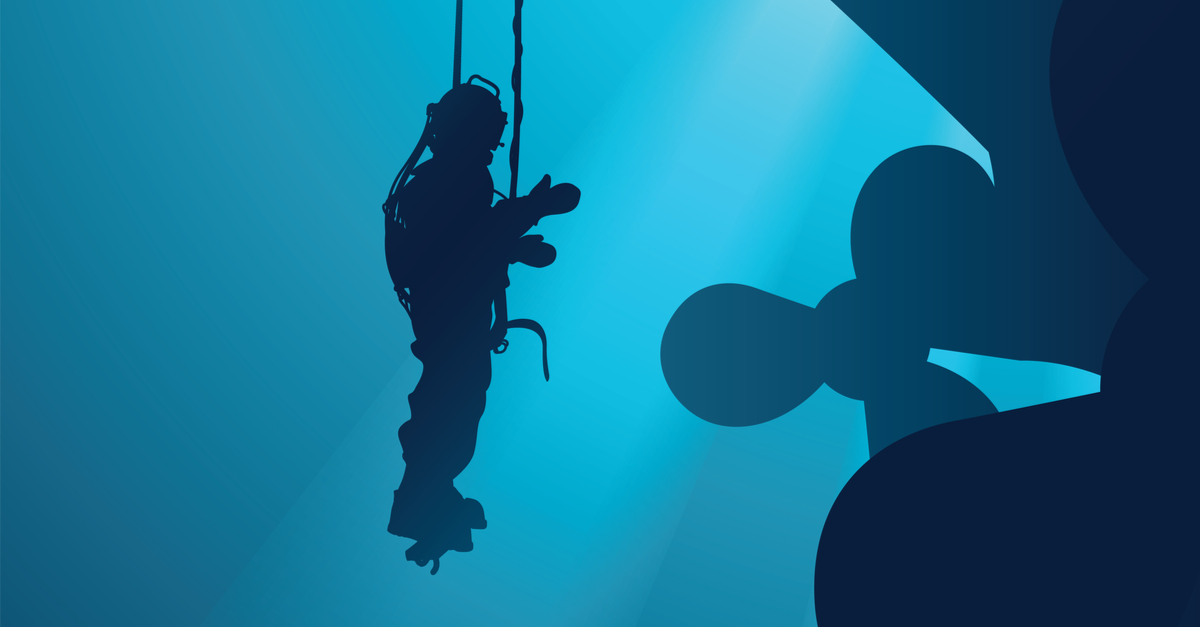W e at Dive Marine Services understand that operating in- or near-water can be a complex and challenging task. Cofferdams in underwater ship repair not only require adequate planning, highly qualified and experienced diving personnel but also the correct assessment of environmental, safety and water management concerns as well as unpredictable weather conditions.
When it comes to repairs or maintenance of a vessel’s hull, unscheduled dry-docking can prove to be a very expensive option for ship owners and managers which, if possible, should be avoided. Dive Marine Services can help clients to reduce these idle times and charges by providing underwater repair and maintenance services such as plugging, blanking or the installation of cofferdams in case of more demanding operations without significantly affecting a vessel’s sailing schedule.
Recently, we have installed a cofferdam on a 13,114 dwt Oil/Chemical tanker here in Singapore to perform high precision welding repair works. The following illustrates the purpose of cofferdams, what their installation requires and how we, Dive Marine Services, approach such high precision, underwater engineering jobs.
A cofferdams in underwater ship repair is a temporary sealed-off space beneath the water surface that allows repair and maintenance works to be carried out on the external sections of a vessel (e.g. hull) in a dry environment. There are several types of cofferdams and these are usually manufactured to suit a specific project. Depending on the size of the cofferdam, a crane and lift bags might be required to facilitate the installation and subsequent removal.
For the recent cofferdam installation as for any other underwater repair or maintenance job, our competent and professionally trained in-house divers and welders followed a job-specific step-by-step method statement, adhering to the strictest safety standards as required for such high precision underwater works.
The three main stages of cofferdams in underwater ship repair
Pre-installation Preparations
After receiving the structural drawings and the job scope from the client, the area that needs to be covered by the cofferdam is precisely measured. If a standard cofferdam is not suitable to meet the job requirements, a new, customised one must be manufactured in advance. The customised cofferdam should have at least the following features: lifting points, suitable cavity dimensions away from the vessel’s hull, attachment points to hold cofferdam and drain/venting valves to allow air to be pumped in water displaced out after the cofferdam is secured as well as any required reinforcement depending on the size of the cofferdam.
Installing the Cofferdam
Before releasing the cofferdam into the sea and navigating it to the specific area of the hull, an initial underwater diving inspection is carried out and temporary brackets are welded to the hull surface in the required positions to mount the cofferdam accordingly. Afterwards, the dive team positions the cofferdam over the area to be covered and aligns the seals with the edge and positions. The divers apply sealant to the nuts and securely install plugs into the drain/pressure equalisation hole for cavity. The divers then retreat from the cofferdam area to a safe distance for the water to be released from the inside of the cofferdam before performing a final check-up regarding leakages.
Removing the Cofferdam
Once the repair and maintenance works inside the cofferdam have been completed the removal process of the cofferdam follows the exact reversal of the installation process described above.
Repairs inside the Cofferdam
Following the precise installation of the cofferdam over the affected hull area, the vessel’s master was briefed about the repair process and procedures of the hull plate replacement within the watertight cofferdam structure. Gas cutting was performed to remove the existing plate as per measured size, supervised by a Fire Watch monitoring the fire throughout the process. Once the damaged plate was cut, all cropped scrap was removed and lifted to the vessel’s main deck. Dive Marine’s specialised fitters then ensured the precise fitting and welding of the new hull plate with proper PPE. After the successful completion of the fitting and welding process, the repaired area was inspected by a class surveyor, performing a quality check to ensure that the results meet regulatory requirements and safety standards. Lastly, after the surveyor’s sign-off, the cofferdam structure was removed and required plate painting and housekeeping tasks were carried out accordingly.
Dive Marine Services – Underwater I.R.M. Experts
Our underwater ship repair and maintenance operations fully comply with local and international safety and quality standards, and our team has built a reputation as true experts in the field. All our commercial divers are certified in accordance with the Singapore SS511 Commercial Diving Code of Practice and regularly undergo specialised safety and task-based training to improve their skills and comply with evolving regulations. Same applies to our underwater welding specialists who are AWS D 3.6 Wet-Welding certified and approved by maritime classification societies such as DNV GL.
Dive Marine Services provides cofferdam installations of all kinds and sizes to our clients. For more information or inquiries regarding our other specialist underwater repair and maintenance services, please contact us.



